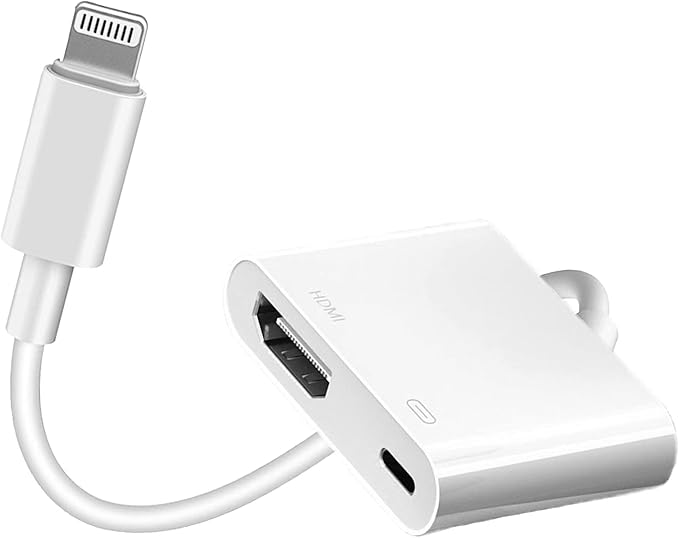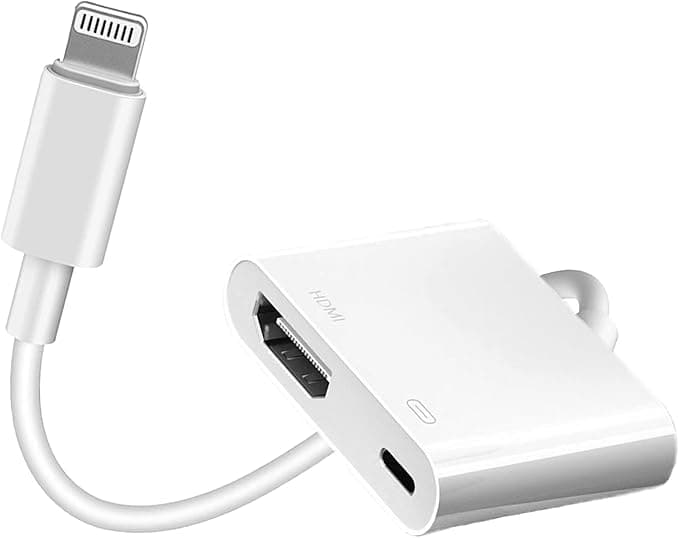
How to Connect Your Phone to a Mini Projector (iPhone & Android Guide)
So, you've got a nifty mini projector Buy mini projector and your smartphone is loaded with photos, videos, or maybe even a presentation. Now, how do you bridge the gap and connect phone to projector to get that content onto the big screen? If you're setting up for an outdoor movie night, you might also be interested in our comparison of mini projectors vs portable TVs for outdoor entertainment. Good news – connecting your phone is usually pretty straightforward!
Whether you're team iPhone or Android, there are generally two main ways to connect phone to mini projector: going wired with an adapter, or trying a wireless connection like screen mirroring. Let's walk through how to do it.
Connecting an iPhone or iPad (Lightning Port) - The Wired Way
For iPhones and iPads (especially older ones with the Lightning port), using a dedicated Lightning to HDMI adapter is often the simplest and most stable method for basic screen mirroring.
What You Need: A Lightning to HDMI Adapter
These little gadgets do exactly what the name says. You plug one end into your iPhone/iPad, connect an HDMI cable to the adapter, and plug the other end of the HDMI cable into your projector.
Example Adapter: Kinhaly Lightning to HDMI Digital AV Adapter

Kinhaly Lightning to HDMI Digital AV Adapter (MFi Certified)
A popular choice to connect iPhone/iPad (Lightning) to HDMI projectors or TVs. Supports 1080p and includes a charging port. Essential for wired iPhone to projector connections.
$13.79
As an Amazon Associate, we earn from qualifying purchases.
Product ID: B09Z2YQ9BY
Look for adapters that are "MFi Certified" (Made for iPhone/iPad) as they tend to be more reliable.
How to Connect iPhone to Projector (Using the Adapter):
It's usually plug-and-play:
- Adapter to iPhone: Plug the adapter's Lightning connector into your iPhone or iPad.
- HDMI Cable: Connect a standard HDMI cable (sold separately) to the HDMI port on the adapter.
- HDMI to Projector: Plug the other end of the HDMI cable into your mini projector's HDMI input port.
- Power Up (Important!): Most adapters have an extra Lightning port. Plug your regular iPhone charger and cable into this port on the adapter. Many adapters require this power connection to work correctly and it keeps your phone charged.
- Projector Input: Turn on your projector and use its remote or buttons to select the correct HDMI input source (HDMI 1, HDMI 2, etc.).
- Trust Device: Your iPhone might pop up a message asking "Trust This Computer?". Tap "Trust" and enter your passcode if prompted.
- Mirror Magic: Your iPhone screen should now appear on the projector!
Why Use a Wired Adapter?
- Simple & Stable: Generally very reliable connection, no Wi-Fi needed.
- Good Quality: Supports 1080p HD for a clear picture.
- Keeps You Charged: The extra power port is crucial.
The BIG Catch: Streaming Apps Don't Work!
What *Does* Work? YouTube, your own photos and videos, presentations (Keynote/PowerPoint), web browsing, many games, and other apps that don't have this specific copyright block.
Adapter Verdict: A Lightning to HDMI adapter is excellent and reliable for getting most content from your iPhone to projector. Just be aware it's not a solution for watching Netflix or similar streaming services directly from your phone this way.
(Note: Newer iPhones/iPads with USB-C ports need a USB-C to HDMI adapter instead. The setup is similar, but the same HDCP streaming limitations often apply.)
Connecting Android Phones
Options for Android to projector connections can vary a bit more:
1. Wired: USB-C to HDMI Adapter
- Check Compatibility: Your phone needs to support "DisplayPort Alt Mode" or MHL over USB-C. Not all Android phones do! Check your phone's specs or manufacturer's website.
- Get the Adapter: If compatible, you'll need a USB-C to HDMI adapter or a direct USB-C to HDMI cable.
- Connect: Plug the USB-C end into your phone and the HDMI end into the projector. Select the correct HDMI input on the projector.
- HDCP Limits: Be aware that the same HDCP copyright protection often prevents mirroring paid streaming apps (Netflix, etc.) even with this wired connection.
2. Wireless: Screen Mirroring / Casting
Many mini projectors now come with built-in Wi-Fi and support wireless mirroring protocols. This makes it a potential screen mirroring projector.
- Check Projector Features: Look for "Screen Mirroring," "Miracast," "Wireless Display," "AirScreen," or similar features in your projector's settings or manual (common on models like FEARWIKY Buy FEARWIKY or XuanPad Buy XuanPad).
- Find Phone Setting: On your Android phone, look for a casting or mirroring option. This is often called "Smart View" (Samsung), "Screen Cast," "Wireless Projection," "Cast," or similar. It's usually found in the pull-down quick settings menu or under Display/Connection settings.
- Connect: Ensure both your phone and projector are on the same Wi-Fi network (sometimes needed). Open the mirroring setting on your phone and select your projector from the list of available devices.
- Potential Issues: Wireless mirroring can sometimes be laggy, lower quality, or unstable compared to a wired connection. Compatibility isn't always guaranteed. And yes, HDCP can still block streaming apps even when mirroring wirelessly.
So, What's the Best Way to Connect Phone to Projector?
- For Photos, YouTube, Presentations, Local Videos: A wired adapter (Lightning to HDMI adapter for iPhone, USB-C to HDMI adapter for compatible Androids) is usually the most reliable and straightforward.
- For Convenience (If It Works): Screen mirroring projector features are cable-free but can be less stable and still face streaming app limitations. Worth trying if your projector supports it.
- For Netflix, Hulu, Prime Video, Disney+, etc.: The most reliable solution is almost always NOT connecting your phone directly. Instead:
- Use a dedicated streaming stick (Amazon Fire TV Stick, Roku Streaming Stick, Google Chromecast) plugged into the projector's HDMI port.
- Use a projector with reliable, built-in smart TV features and apps (like some Android projectors, but verify app compatibility!).
Getting your phone's content onto the big screen is definitely achievable! Just pick the right method for your device and what you want to watch, keeping those pesky streaming app rules in mind. For creative ideas on using your connected projector and phone, check out our guide on creative ways to use your mini projector. Enjoy the big picture!
Stay Updated
Get the latest projector reviews and deals in your inbox.
We respect your privacy.



